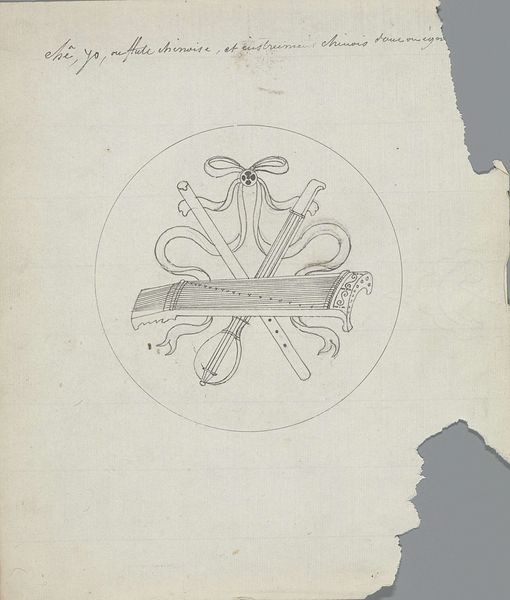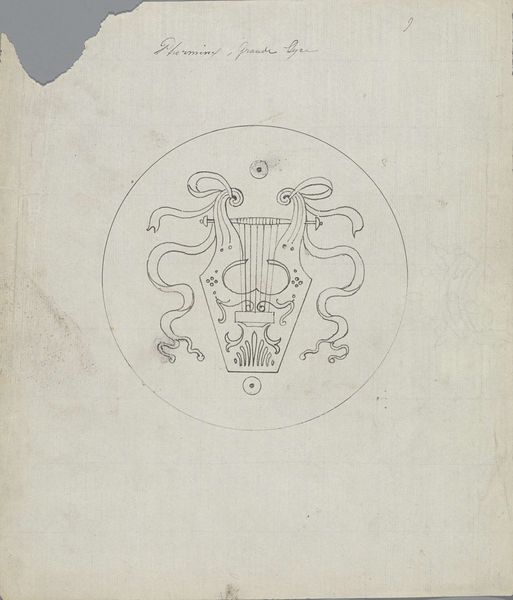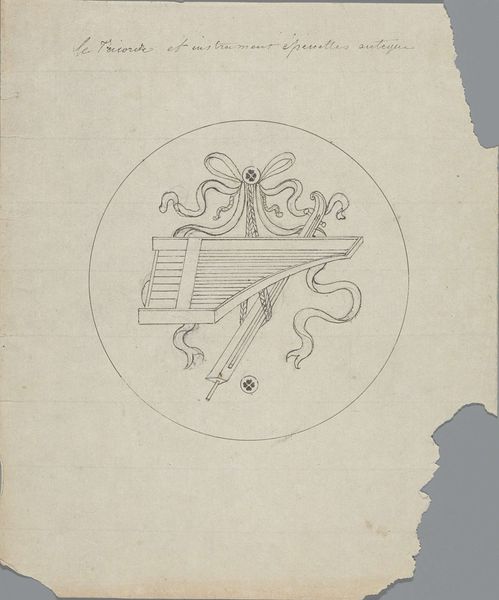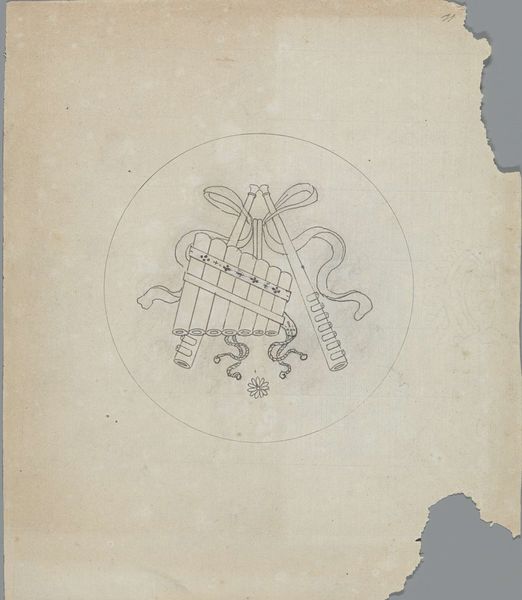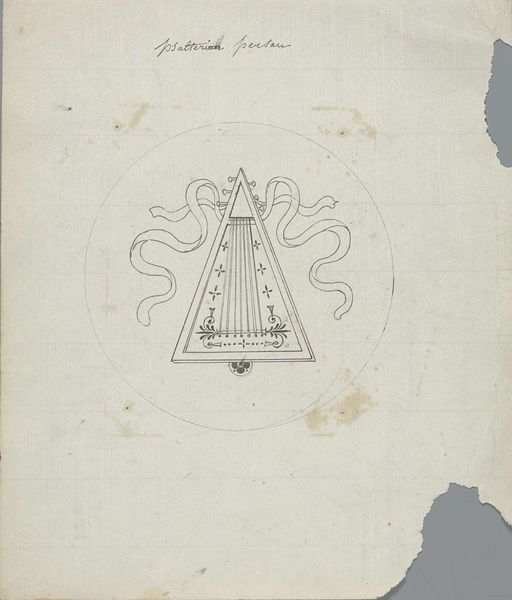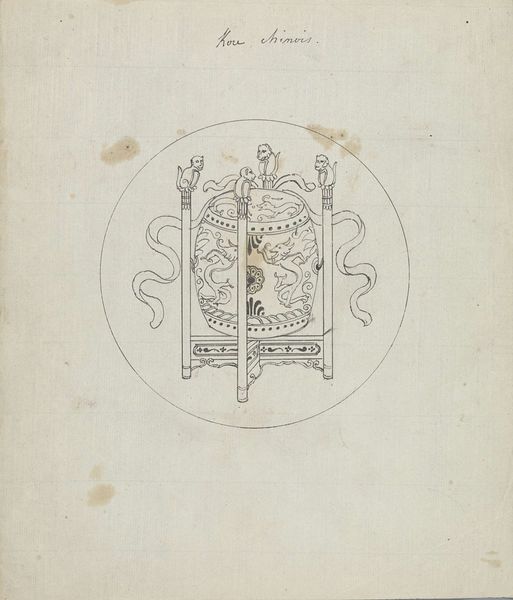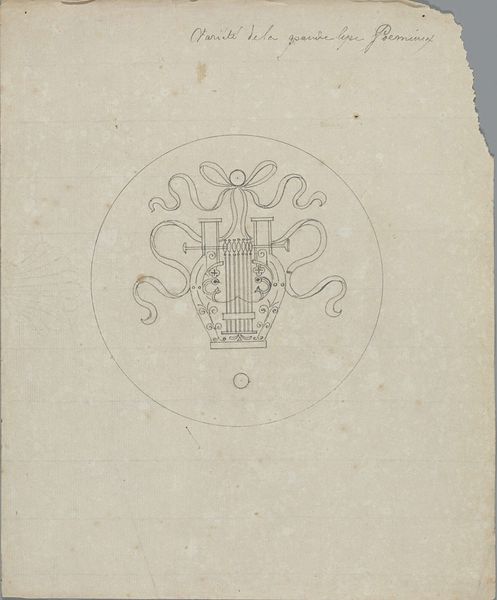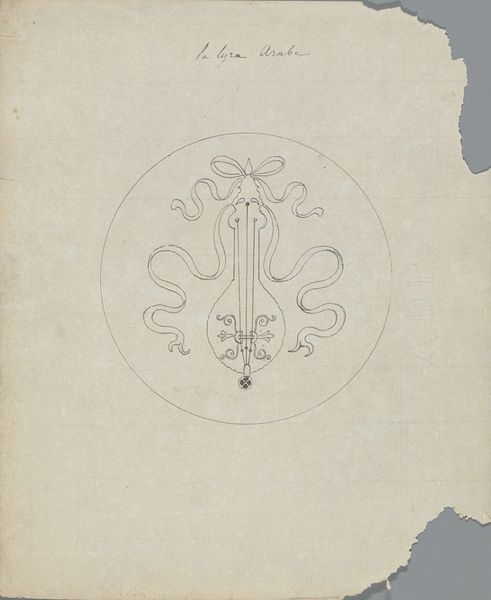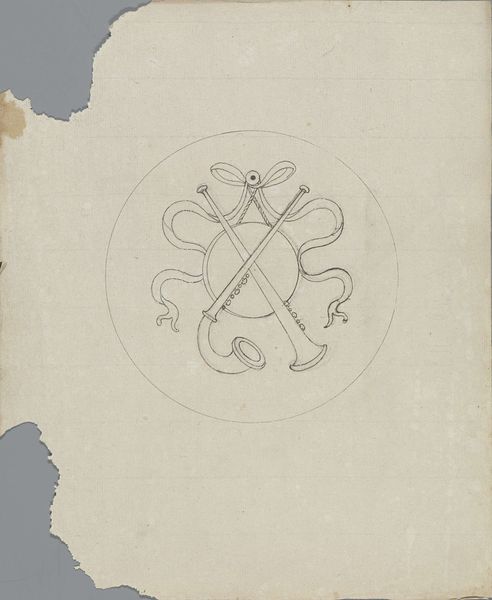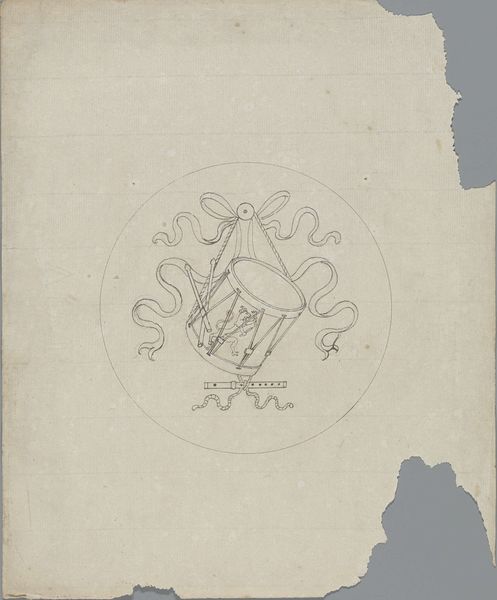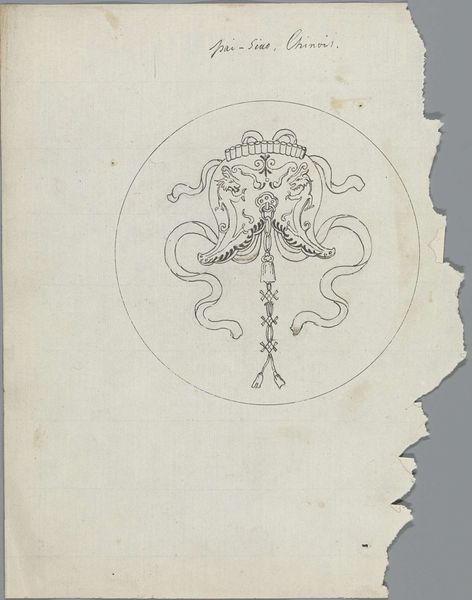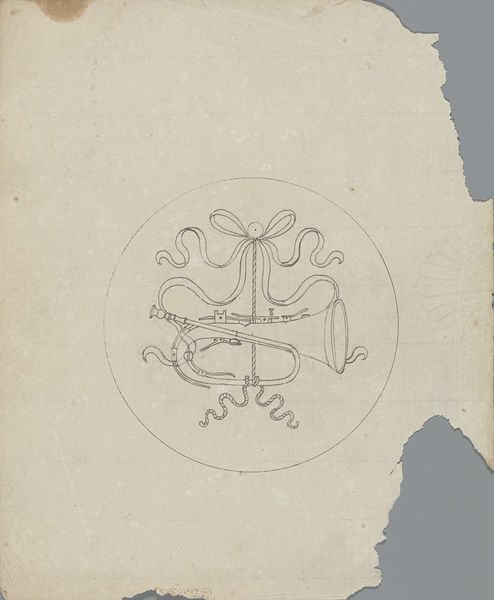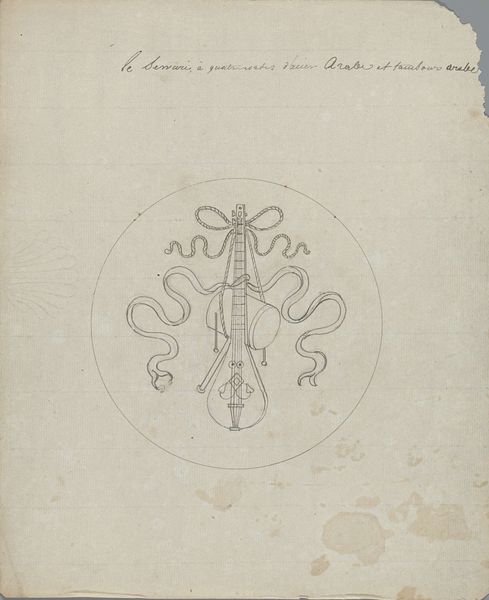
drawing, pencil
#
drawing
#
neoclassicism
#
old engraving style
#
form
#
personal sketchbook
#
geometric
#
pencil
#
line
#
sketchbook drawing
#
watercolour illustration
Dimensions: height 253 mm, width 208 mm, diameter 123 mm
Copyright: Rijks Museum: Open Domain
Curator: Immediately, the spartan precision of the lines gives me a feeling of antiquity, almost as though it is a memory fragment excavated from another age. Editor: That's a fascinating starting point. What we are observing is Pierre Félix van Doren's "Lyre de Pythagore", made sometime before 1828. Rendered with pencil in delicate lines, it presents a classical image deeply rooted in both mythology and mathematical theory. Curator: It’s difficult not to see the central structure of the lyre as a pure form. Consider the arrangement of the parallel lines of the resonating chamber and the framing scrollwork; the aesthetic relies on order. Its visual impact relies more on harmony than flamboyance. Editor: The lyre itself, particularly one linked to Pythagoras, is so potent symbolically. It represents harmony in a very direct way, as Pythagoras explored mathematical ratios in music. He believed these proportions echoed the divine order of the universe. Curator: Note how van Doren situates the lyre. The composition emphasizes balance and proportion. The circular frame also provides a subtle framework to intensify the perception of geometrical purity and completeness. Editor: That framing highlights the classical desire to understand the world through measurable relationships. This echoes, for instance, ideas of cosmic harmony found in many cultures. So much symbolism distilled into an image using very economic means. Curator: Indeed, the artwork successfully fuses theoretical contemplation and visual harmony in such a simple aesthetic design. Editor: The work clearly encourages us to find symbolic echoes from antiquity, but through geometry as a form it evokes beauty.
Comments
No comments
Be the first to comment and join the conversation on the ultimate creative platform.
